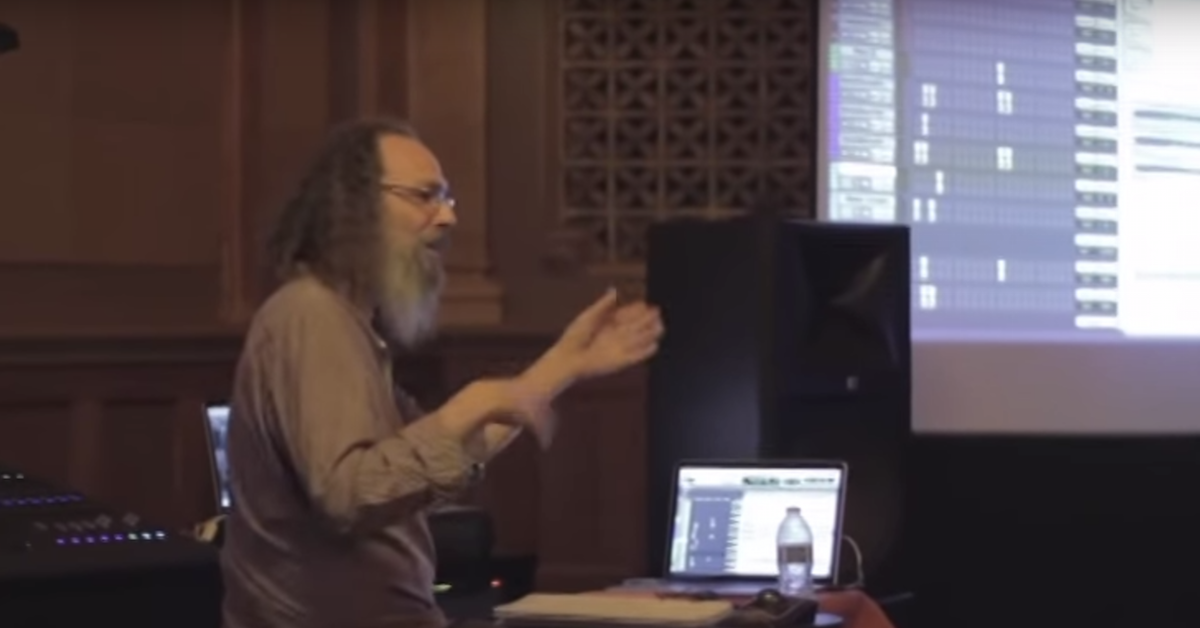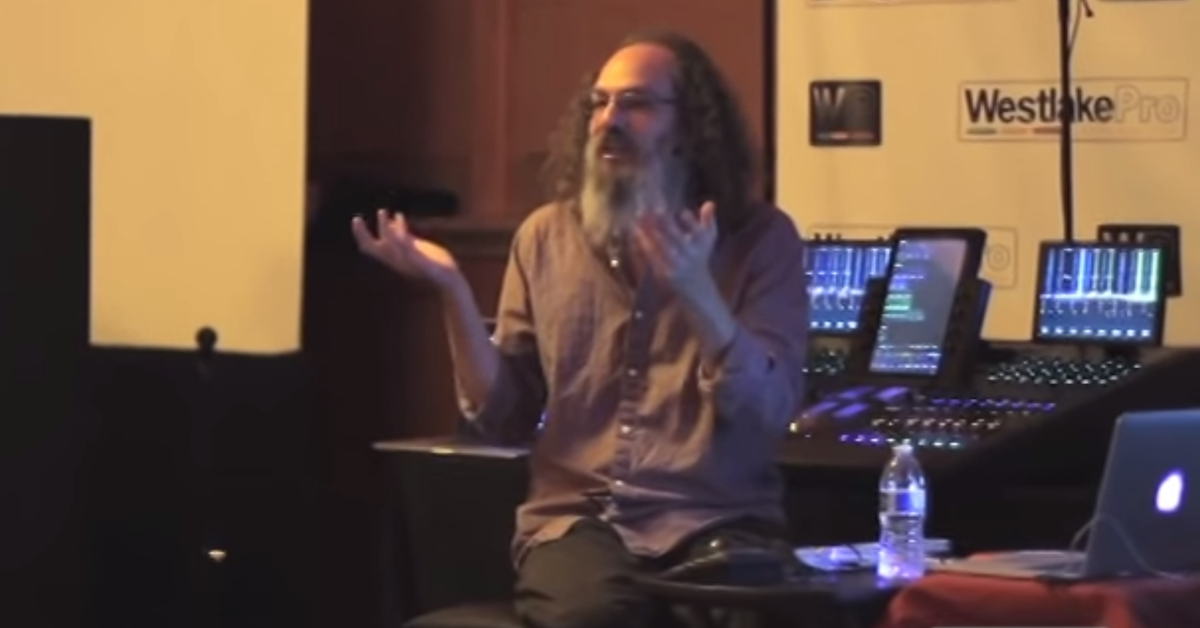Mixing Masterclass with Andrew Scheps — Part 8
On this, I probably added some super long reverbs in a couple of spots, but I’ll often go to D-Verb for things like that. When it’s reverb you want to hear, D-Verb is grainy and kind of lo-fi, and sticks out in a mix, which is — I either want a reverb you don’t hear at all, like that horn reverb, where Altiverb is just fantastic, just cycle through a bunch of stuff, or ReVibe, or any of the impulse response ones are great other than Altiverb, or I want a reverb you can hear really, really easily, so it’ll be D-Verb on like, infinite, and something like that.
[someone asks question]
It’s all completely random.
No. [laughs] No, I mean the horns on that record, and the background vocals — the background vocals I left panned the way I got them, because first of all, they’re fantastic. I mean, it’s the Marley sisters. It’s practically melody makers on this.
So how they balanced them and did it, I pretty much left that alone, so what that meant was I only really had to look at the horns. Most of the horn parts were doubled, and they had each horn take spread stereo, and I just made a decision on — the other great thing about working in the box is I didn’t have a first song I was mixing, I had the first six songs I was mixing, I mixed the first six songs, and any time I felt like I wasn’t being productive, instead of checking e-mail, I just opened up another song.
So I made a decision while going around those six songs to take these doubles and actually split them up for some of the instruments, and not for others.
So I actually went through each arrangement pretty closely and decided, “Do I want wall of horns, or do I want all of the trumpets in the middle spreading out to the low end, or all the low end in the middle spreading out to the trumpets?”
So that changes song to song, and they were also recorded in a really great room, so there are room tracks for the horn takes, and those had to be panned along with it.
So that was just a real — I don’t know, it was a creative decision on every song just based on what it was fighting with, because the things that mattered, pan wise, were the things doing the bubble.
Whether they had to sit on top of each other and make one sound, or if they had to be split because the feels were slightly different, or because the notes were clashing, the chords that are playing don’t always mesh right on top of each other. Some were outlining things on that. So all of their passing tones are different.
So that dictated the panning for everything else. So the horns, it was really about what sounds cool, but gets them out of the way, where you don’t notice. But they’re generally pretty wide. Your only choices for an initial send value are minus infinity or zero.
If I could have an initial send value of minus six, 90% of my sends would never move, because then I don’t get too much of it, because I’m sending 30 things into this compressor, and at zero, it’s way too loud, and I hate going through and turning up the faders.
So a lot of times, I’ll make one at minus six with follow main pan on, and then copy it to every track in the session, and then mute them all, and then that way, I can just do it with mutes and really quickly kind of hear what goes in.
So usually, they’re brought down a little bit post-fader, so it’s whatever balance is in the mix, down a little bit going, and that way, that aux can stay at zero, or sometimes, especially with the drum parallels, you get those sounding really awesome, but they also make things noisy and dense, so I’ll bring them all the way down once the balance is up, and start sneaking them in and just tuck them in.
The way a lot of people get bass level by turning it off and then turning it up until it’s good, I’ll do that with a parallel compressor sometimes. Kind of get it set, and then take it out and bring it in until it’s really cool, and then go over the top and bring it back.
So it really depends on what you’re doing, but you do have to be careful about how much level is getting in there, because with multiple things going in, it’s really easy to just have way too much level on the low end.




